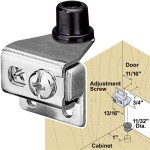How To Mirror iPhone onto Macbook Pro
Mirroring an iPhone's display onto a Macbook Pro offers a larger viewing experience for various activities, from presentations and demonstrations to enjoying media content or playing mobile games. Several methods facilitate this screen mirroring, each with its advantages and optimal use cases.
Using QuickTime Player
QuickTime Player, a pre-installed application on macOS, provides a straightforward wired mirroring solution. This method offers low latency, making it suitable for activities requiring real-time interaction, such as gaming or using interactive apps.
- Connect the iPhone to the Macbook Pro using a Lightning to USB cable.
- Open QuickTime Player on the Macbook Pro.
- Select "File" from the menu bar.
- Choose "New Movie Recording."
- Next to the record button, a dropdown arrow will appear. Click it.
- Under “Camera”, select the connected iPhone.
- The iPhone's screen will then be mirrored on the Macbook Pro's display.
Using AirPlay with a Compatible App
AirPlay facilitates wireless screen mirroring to compatible applications on the Macbook Pro. This method offers greater flexibility and freedom of movement compared to wired solutions. However, performance can be affected by network conditions.
- Ensure the iPhone and Macbook Pro are connected to the same Wi-Fi network.
- Open a compatible AirPlay receiver application on the Macbook Pro. Applications like LetsView (free), Reflector (paid), or AirServer (paid) provide AirPlay receiver functionality.
- On the iPhone, open Control Center.
- Tap the "Screen Mirroring" button.
- Select the Macbook Pro from the list of available devices.
- The iPhone's screen will be mirrored to the Macbook Pro via the chosen application.
Mirroring Specific Content with Supported Apps
Certain applications support direct streaming or screen sharing to specific platforms, including macOS. This approach provides a streamlined experience for sharing specific content without mirroring the entire iPhone display. This method is ideal for presenting photos, videos, or presentations.
- Ensure both the iPhone and Macbook Pro have the relevant app installed (e.g., Keynote, Photos, or other compatible apps).
- Open the desired content within the app on the iPhone.
- Look for the Share icon or a similar option within the app's interface.
- Select the option to present or share to a Mac or AirPlay device.
- Choose the Macbook Pro from the list of available devices.
Troubleshooting Common Mirroring Issues
Occasionally, users might encounter issues during the mirroring process. The following troubleshooting steps can help resolve common problems.
Network Connectivity:
Ensure both devices are connected to the same Wi-Fi network and that the network is stable for AirPlay mirroring. For wired connections, check the cable for damage and ensure it's securely connected.Software Updates:
Verify that both the iPhone and Macbook Pro are running the latest software versions. Outdated software can sometimes cause compatibility issues.Firewall Settings:
Check the Macbook Pro's firewall settings. The firewall might be blocking the connection required for mirroring. Temporarily disabling the firewall for testing can help identify this issue.Restart Devices:
Restarting both the iPhone and Macbook Pro can often resolve temporary software glitches that might be interfering with the mirroring process.Receiver App Compatibility (For AirPlay):
If using AirPlay, ensure the receiver application on the Macbook Pro is fully compatible with the iPhone's iOS version.
Choosing the Right Mirroring Method
Selecting the appropriate mirroring method depends on the specific needs of the user.
QuickTime Player:
Ideal for low-latency activities like gaming or using interactive apps where real-time responsiveness is crucial. However, it requires a wired connection.AirPlay:
Offers wireless convenience for presentations, media consumption, and less demanding tasks. Performance depends on network stability.App-Specific Mirroring:
The best choice for sharing specific content like photos, videos, or presentations without mirroring the entire iPhone display. Streamlines the sharing process and often offers optimized performance for the specific content type.
Optimizing Mirroring Performance
Several factors can impact the performance of screen mirroring. Consider these tips to optimize the experience.
Close Unnecessary Apps:
Closing unused applications on both the iPhone and Macbook Pro can free up system resources and improve mirroring performance.Reduce Network Congestion:
Minimize other network activity while mirroring, especially for AirPlay connections. Large downloads or streaming activities on the same network can impact performance.Adjust Display Settings:
Lowering the resolution of the mirrored display on the Macbook Pro can improve performance, especially for less powerful hardware or slower network connections.
Security Considerations for Screen Mirroring
While convenient, screen mirroring requires attention to security, especially in public or shared environments.
Avoid Public Networks:
When using AirPlay, refrain from mirroring on public Wi-Fi networks as they present security risks. Use a trusted and secure network whenever possible.Disconnect After Use:
Always disconnect the mirroring session when finished to prevent unauthorized access to your iPhone's screen content.Verify Receiver Devices:
Double-check the name of the receiver device when using AirPlay to ensure you are connecting to the correct Macbook Pro and not a malicious device masquerading as yours.

How To Mirror Iphone Display Macbook Ios 12 Macos Mojave

How To Mirror Iphone Mac Without Wi Fi

Newest How To Mirror Iphone Mac Macbook Airdroid

5 Easy Steps To Mirror Iphone Mac Istreamer

2024 Updated How To Mirror Iphone Mac With 5 Methods

2024 Updated How To Mirror Iphone Mac With 5 Methods

Mirror Iphone To Mac View Screen On 3 Ways

5 Easy Steps To Mirror Iphone Mac Istreamer

How To Mirror Iphone Mac Without Wi Fi

How To Mirror Iphone Screen Mac Quick Easy Wireless 2024








